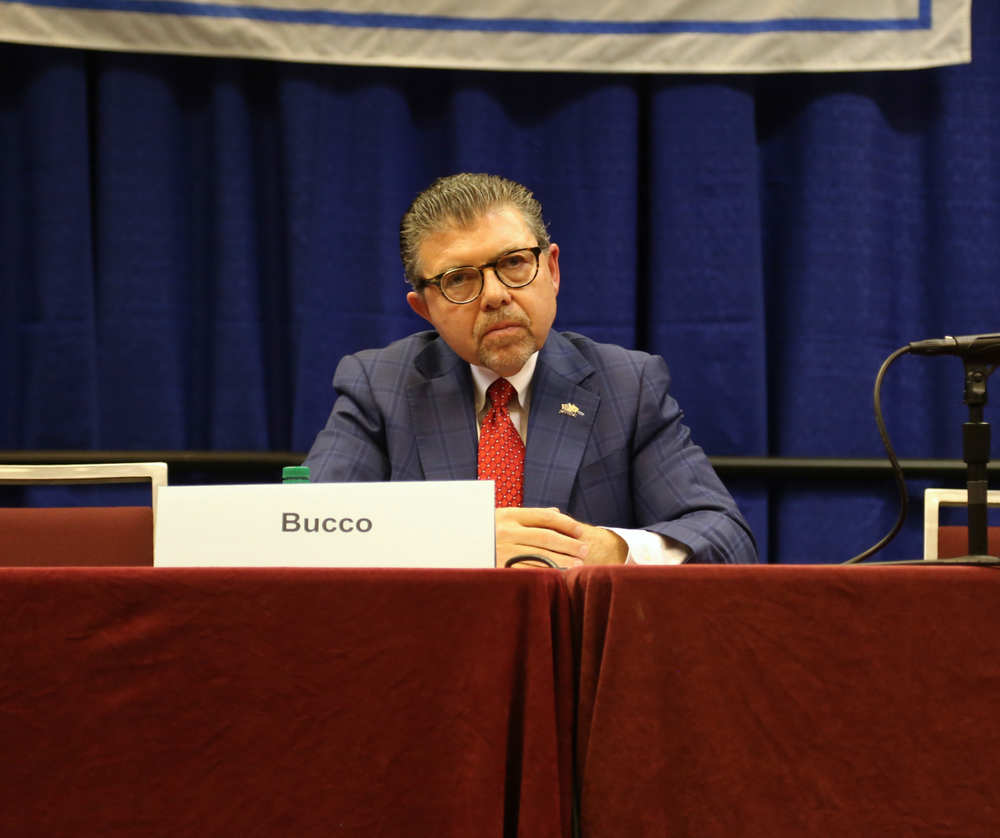'Cocktail for disaster' — top Republican lawmaker says NJ botched affordable housing plans
Jan. 31, 2025, 2:09 p.m.
State Sen. Anthony Bucco's reaction comes a day after Gothamist reported more than a quarter of NJ towns say state officials made errors in calculating their developable land.

One of New Jersey’s top Republican lawmakers says reports from dozens of towns that the state vastly overestimated available land for new construction shows that the Garden State’s plans to develop tens of thousands of affordable homes is a “cocktail for disaster.”
”As the towns are drilling down deeper into this they're realizing that these numbers are just not accurate, and they're doing what they need to do to make sure they protect themselves,” said state Sen. Anthony Bucco, the Republican minority leader.
Bucco’s reaction comes a day after Gothamist reported that more than a quarter of the municipalities that have filed affordable housing resolutions this month have requested lower construction commitments from the state, based on what they say is a miscalculation of their available developable land.
Data shows that 107 cities and towns — out of 367 that have filed resolutions so far — argue that the state’s Department of Community Affairs overshot the number of acres available for development by including parcels of protected wetlands and farmland, preserved open space and land that is already being developed in its estimates.
East Brunswick Mayor Brad Cohen told Gothamist this week that the state miscalculated the amount of available land by 300%. He said the state’s process was “rushed” and that officials based their determination on “fallacious” data. In their resolution, East Brunswick officials asked that their requirement be reduced from 314 homes to 256.
Over the next two months, a panel of retired state judges appointed to the state’s new Affordable Housing Dispute Resolution Program will review the towns’ objections and determine whether to lower the targets for building new affordable housing. If the panel broadly accepts their arguments, it could substantially lower the state’s aim to construct about 84,000 new homes priced for low- and medium-income people over the next decade.
Democratic Assemblymember Yvonne Lopez, the housing committee chair and lead sponsor of the state's 2024 affordable housing law, said she's not worried these disputes will affect the law’s implementation. She said the law “empowered” municipalities to do their own calculations and that the affordable housing requirements sent to local leaders in October were meant as nonbinding guidance.
However, Bucco said he’s concerned that disputes over available land could lead to the same court fights over building affordable housing that New Jersey has contended with for years.
“That's the game that we've been playing for decades now, the state sets an affordable unit number. And then … the units never get built,” he said.
In a written statement, Department of Community Affairs spokesperson Lisa Ryan said the agency determined its numbers by using aerial imagery combined with data from the state’s Department of Environmental Protection to remove open waters, wetlands, steep slopes and open spaces from its total calculations. She said it also used construction permit data provided by municipalities to identify building sites, but that it did not have data on land currently in the development process.
But each of the 107 towns currently contesting those calculations argues that the Department of Community Affairs did not adhere to its own guidelines.
“I am confident these disputes will be handled by the Affordable Housing Dispute Resolution Program accordingly and that the intent of the bill will be maintained,” Lopez said.
Bucco called that “wishful thinking.”
NJ ‘rushed,’ miscalculated land estimates for affordable housing, mayor says NJ towns that sued state agree to affordable housing quotas after multiple court losses